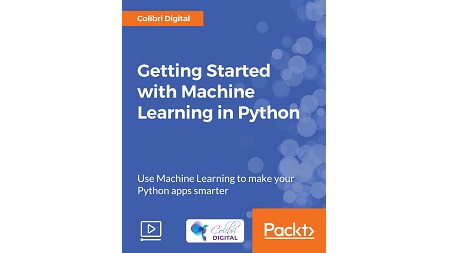
English | MP4 | AVC 1920×1080 | AAC 48KHz 2ch | 2h 53m | 600 MB
A+ guide to using Machine Learning to classify objects, predict future prices, and automatically learn fixes to problems
Machine Learning is a hot topic. And you want to get involved! From developers to analysts, this course aims to bring Machine Learning to those with coding experience and numerical skills.
In this course, we introduce, via intuition rather than theory, the core of what makes Machine Learning work. Learn how to use labeled datasets to classify objects or predict future values, so that you can provide more accurate and valuable analysis. Use unlabelled datasets to do segmentation and clustering, so that you can separate a large dataset into sensible groups.
You will learn to understand and estimate the value of your dataset. We guide you through creating the best performance metric for your task at hand, and how that takes you to the correct model to solve your problem. Understand how to clean data for your application, and how to recognize which Machine Learning task you are dealing with.
If you want to move past Excel and if-then-else into automatically learned ML solutions, this course is for you!
This extensive course is divided into clear bite-size chunks so you can learn at your own pace and focus on the areas of most interest to you. A practical, hands-on course packed with step-by-step instructions, working examples, and helpful advice. You will learn how Machine Learning can be used to create artificial intelligence.
What You Will Learn
- Core concepts of Machine Learning so you can understand fellow data scientists
- Clean your data to optimize how it feeds into your Machine-Learning models.
- Perform regression in a supervised learning setting, so that you can predict numbers, prices, and conversion rates.
- Perform classification in a supervised-learning setting, teaching the model to distinguish between different plants, discussion topics, and objects.
- Use decision tree models and random forests, creating models that are explainable but powerful.
- Go past linear models with SVMs and polynomial regression, tackling relationships that are non-linear.
- Measure and evaluate your Machine-Learning pipeline, so that you can improve your solution over time.
Table of Contents
Launching a Python Environment to Create Machine Learning Models
1 The Course Overview
2 Machine Learning versus Rule-Based Programming
3 Understanding What Machine Learning Can Do Using the Tasks Framework
4 Creating Machine-Learned Models with Python and scikit-learn
5 Supervised Versus Unsupervised Learning
Prepare Your Datasets for Machine Learning with Data Cleaning
6 Fix Your Machine Learning Models by Understanding Your Data Source
7 Dealing with Missing Values – An Example
8 Standardization and Normalization to Deal with Variables with Different Scales
9 Eliminating Duplicate Entries
Put Data into Their Right Categories with Classification
10 How Do We Learn Rules to Classify Objects
11 Understanding Logistic Regression – Your First Classifier
12 Applying Logistic Regression to the Iris Classification Task
13 Closing Our First Machine Learning Pipeline with a Simple Model Evaluator
Predict Numbers in the Future with Regression
14 Creating Formulas That Predict the Future – A House Price Example
15 Understanding Linear Regression – Your First Regressor
16 Applying Linear Regression to the Boston House Price Task
17 Evaluating Numerical Predictions with Least Squares
Unsupervised Learning – Segmenting Groups and Detecting Outliers
18 Exploring Unsupervised Learning and Its Usefulness
19 Finding Groups Automatically with K-means Clustering
20 Reducing the Number of Variables in Your Data with PCA
21 Smooth out Your Histograms with Kernel Density Estimation
Modeling Complex Relationships with Nonlinear Models
22 Create Explainable Models with Decision Trees
23 Deal with Nonlinear Relationships with Polynomial Regression
24 Reduce the Number of Learned Rules with Regularization
25 Automatic Feature Engineering with Support Vector Machines
Resolve the captcha to access the links!